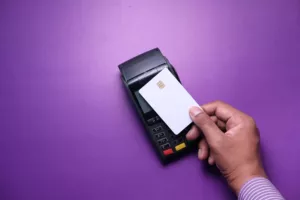Introduction
Businesses have a variety of payment alternatives available to them in the modern digital age. Traditional paper checks and electronic checks, or eChecks, are the two most used techniques. The best option for your needs as a business will rely on which of the positives and cons each offers. To assist you in making an informed choice, we’ll examine the distinctions between eChecks and conventional checks in this blog post.
Traditional Checks
1. Familiarity and Acceptance
Checks written on paper have been used for generations. They are still in use by a lot of small and medium-sized businesses (SMBs) since vendors and business owners are familiar with them. But efficiency isn’t always a result of familiarity.
2. Processing Time
A paper cheque that is sent needs to be delivered physically to the receiver. Days or even weeks may pass throughout this process, particularly if the recipient is located elsewhere. The recipient must also deposit the cheque at their bank, which adds to the payment process’s delay.
3. Security Risks
Physical checks are prone to misplacement, pilferage, or impairment. A cheque that is misplaced or stolen may cause financial difficulties. Paper checks must be secured throughout transit, therefore businesses need to take extra security measures.
Electronic Checks (eChecks)
Speed and Efficiency:
- eChecks offer significant advantages in terms of speed and efficiency:
Processing Time:
- eChecks are processed much faster than paper checks. They usually show up in one to three business days, if not sooner.
Scheduled Payments:
- Businesses can schedule eCheck payments in advance, streamlining accounts payable (AP) management.
Reduced Manual Handling:
- eChecks eliminate the need for physical transportation, reducing the time spent on administrative tasks.
Security:
- Since eChecks are electronic, there is less chance of theft or physical loss. Sensitive information is protected during transmission using secure channels and encryption. Additionally, businesses can more easily track eCheck payments.
Convenience:
- Businesses can pay all of their invoices at one location by utilising eCheck platforms such as Melio. Digital payment management is convenient and makes financial processes simpler.
Choosing the Right Method
Consider the following factors when deciding between eChecks and traditional checks:
Customer Base:
- It might still be relevant to use traditional checks if your consumers prefer local banking methods. However, eChecks are more effective if you deal with a worldwide audience.
Business Needs:
- Review the payment procedures that your company uses. Which is what you want: convenience, security, or speed? Make your decision based on your unique needs.
How do I Educate my customers about switching to eChecks?
Of course! Encouraging your clients to convert to electronic checks is crucial for a seamless implementation. The following are some practical methods to assist you in explaining the advantages and promoting adoption:
Create Informative Content:
Blog Posts:
- Write blog posts or articles explaining the advantages of eChecks. Highlight topics such as speed, security, and convenience.
Email Newsletters:
- Send regular newsletters to your customer base. Include sections about eChecks and their benefits.
Social Media:
Share infographics, videos, or short posts on your social media channels. Visual content can grab attention and convey information effectively.
Personalized Communication:
Direct Emails:
- Reach out to individual customers via email. Explain how eChecks work and why they are beneficial for both parties.
Phone Calls:
- For key clients or long-standing customers, consider making personal phone calls. Discuss the advantages of eChecks and address any concerns they might have.
Offer Incentives:
Discounts:
- Provide a small discount or incentive for customers who switch to eChecks. This encourages adoption.
Easy Setup:
- Highlight how simple it is to set up eChecks. Offer assistance if needed.
Training Sessions:
Webinars:
- Host webinars or virtual training sessions specifically focused on eChecks. Invite your customers to attend and learn more.
Tutorials:
- Create step-by-step tutorials or videos demonstrating how to use eCheck platforms. Make them accessible on your website or through email.
Address Concerns:
Security:
- Assure customers that eChecks are secure. Explain encryption, authentication, and fraud prevention measures.
Transition Process:
- Clarify the transition process. Let them know what to expect when switching from paper checks to eChecks.
Collaborate with Your Bank or Payment Provider:
Bank Support:
- Work closely with your bank or payment provider. They can provide educational materials or assist with customer inquiries.
FAQs:
Create an FAQ section on your website addressing common questions about eChecks.
Keep in mind that consistency is essential. Reiterate the advantages of eChecks on a regular basis using different channels. Your consumers will grow accustomed to using this effective payment option over time.
I’ve given you some useful tips on how to tell your clients to start using eChecks. You are welcome to modify these strategies to fit your own business environment. Please do not hesitate to ask for more help if necessary!
Summary
In conclusion, eChecks are becoming the better option because of their convenience, speed, and security. For your company, think about moving to digital payments. Keep in mind that technology is always changing, so knowing your alternatives for payments is crucial to the success of your business.
Keep in mind that the effectiveness and financial health of your company can be greatly impacted by choosing the appropriate payment option. Make an informed choice!
I’ve included a thorough comparison of eChecks vs paper checks, stressing the benefits and things to keep in mind. Please don’t hesitate to inquire if you have any special questions or need more information!
FAQs
What Is an eCheck?
An electronic cheque, or eCheck, is a paper cheque that has been converted to digital form. Money is electronically sent over the Automated Clearing House (ACH) network from the payer’s checking account to the payee’s checking account when an eCheck is used. U.S. banking organisations use the electronic network known as ACH to conduct secure transactions.
How Do eChecks Work?
Authorization:
Prior to completing the transaction, the business must obtain authorization from the customer. This can be accomplished through an online payment form, a signed order form, or a recorded phone call.
Payment Setup:
Following authorization, the business enters the payment details into the online payment processing software, including the details of any recurring payments.
Finalise and Submit:
After the information has been accurately entered into the payment software, the business clicks “Save” or “Submit” to initiate the ACH transaction process.
Funds Deposit:
The consumer receives a payment receipt from the online program, the payment is automatically deducted from their bank account, and the money is put into the business’ bank account. Three to five business days following the start of the transaction, the funds are normally put into the merchant’s bank account.





